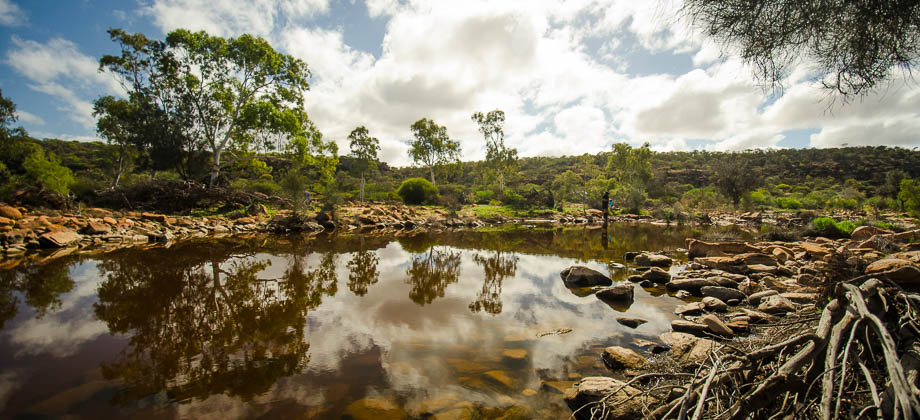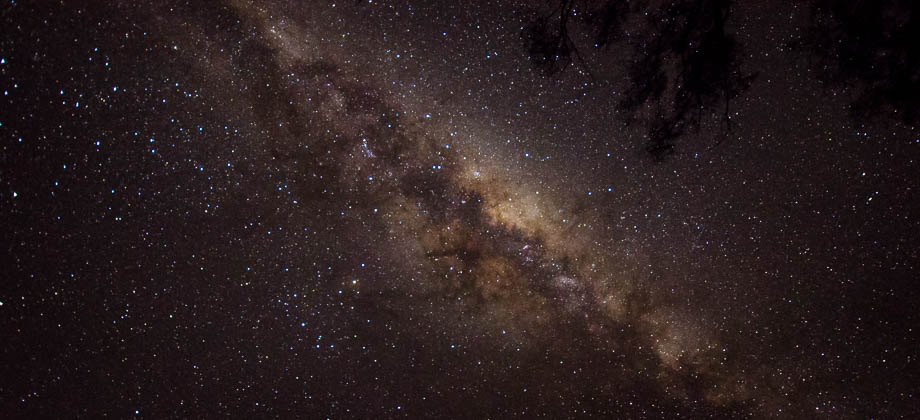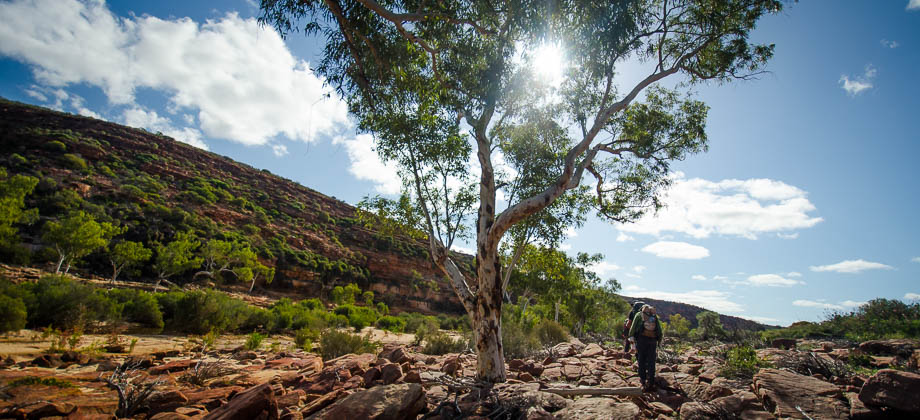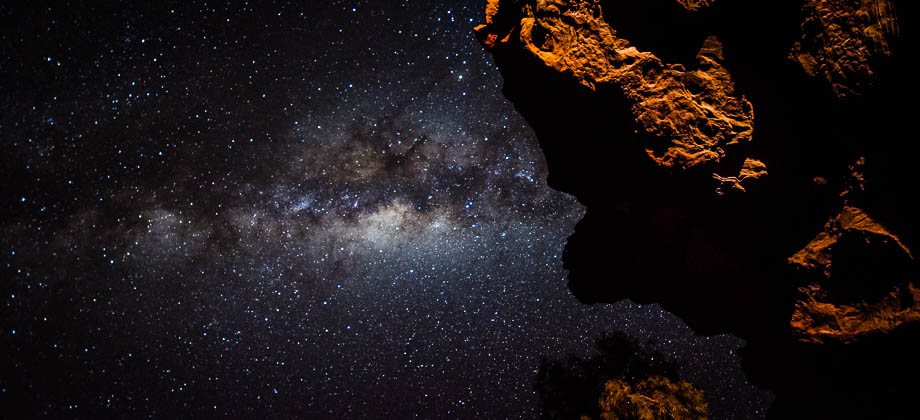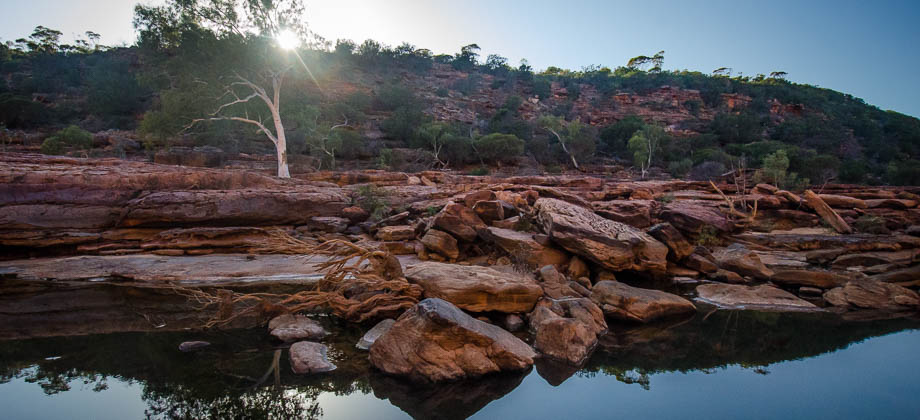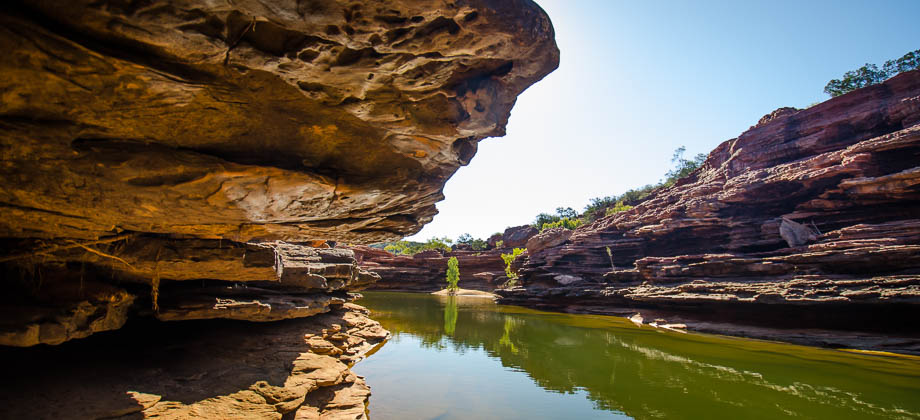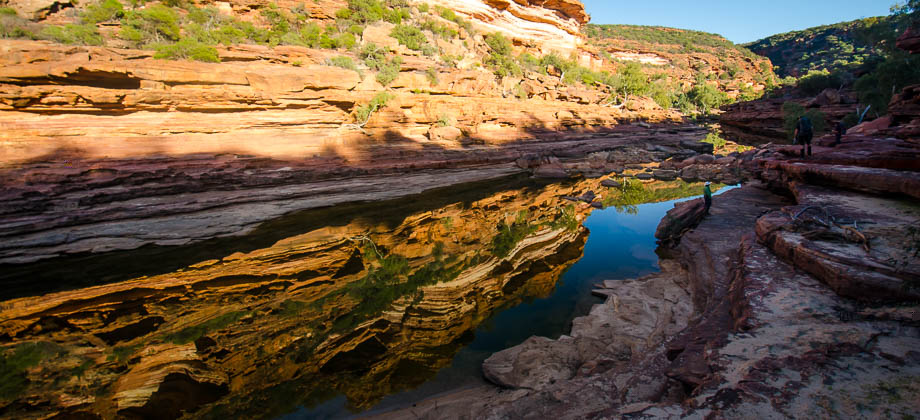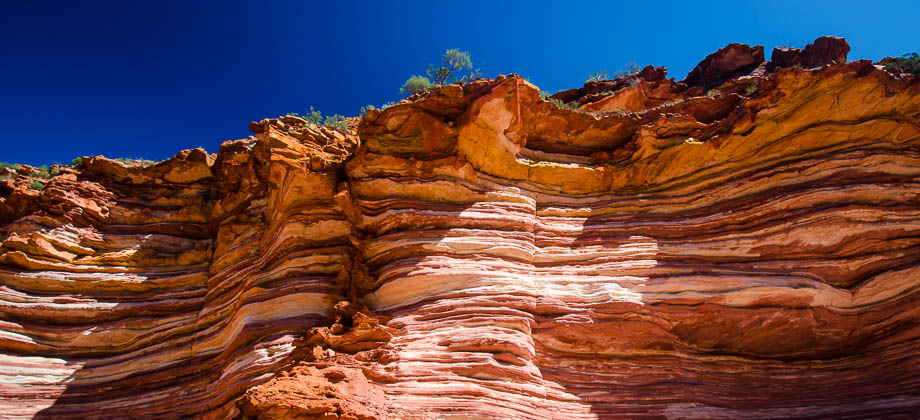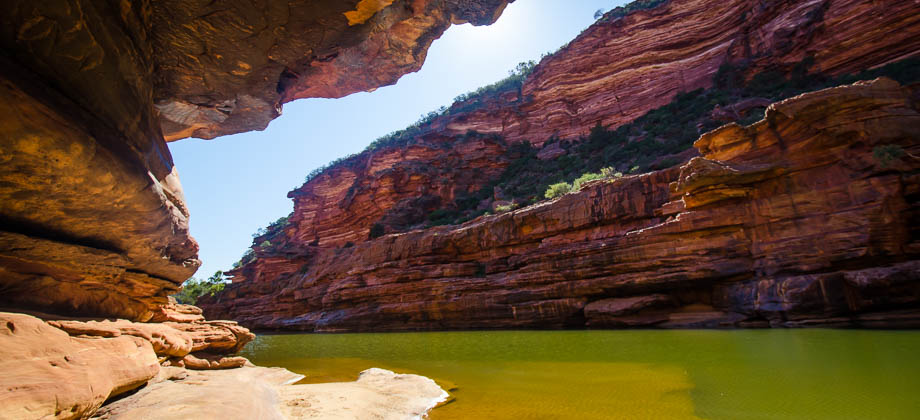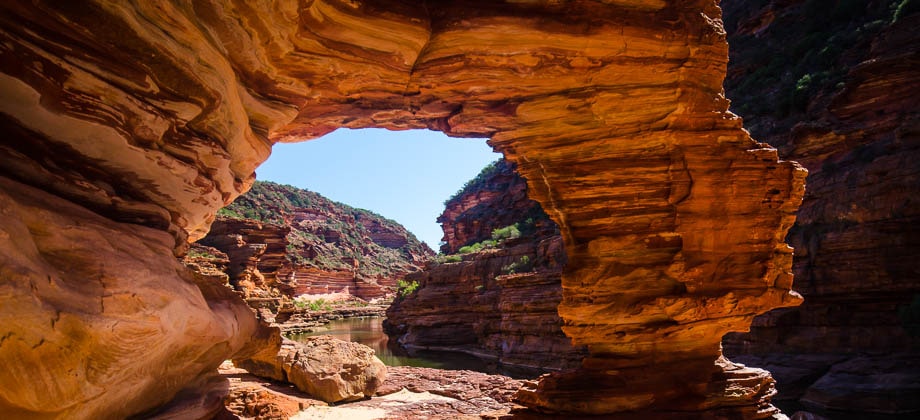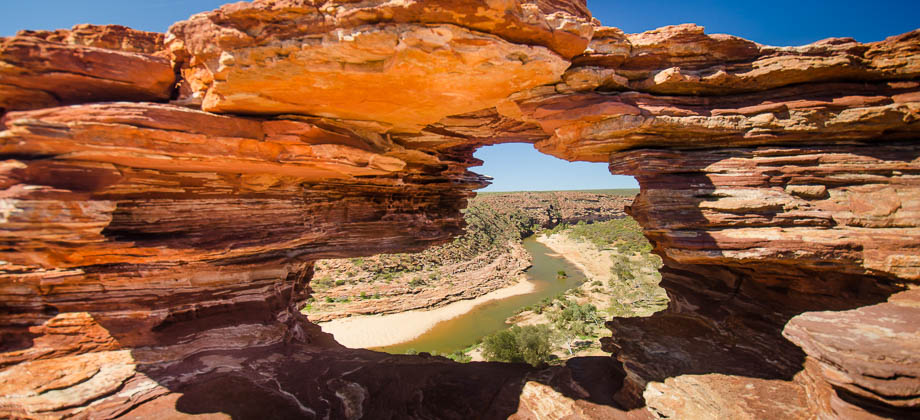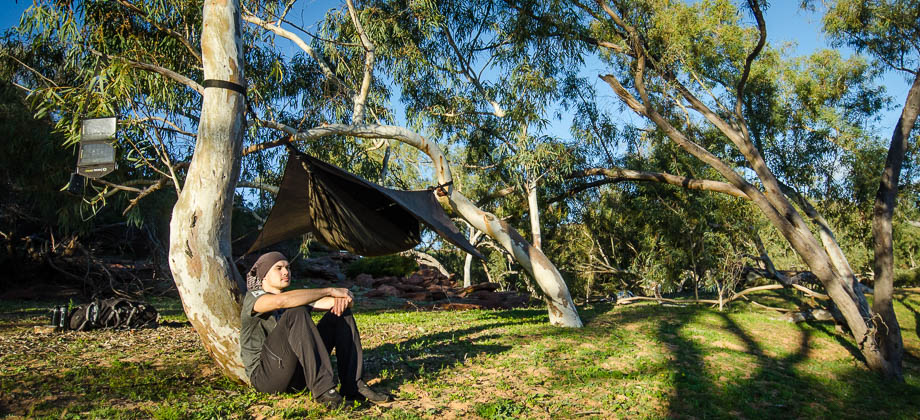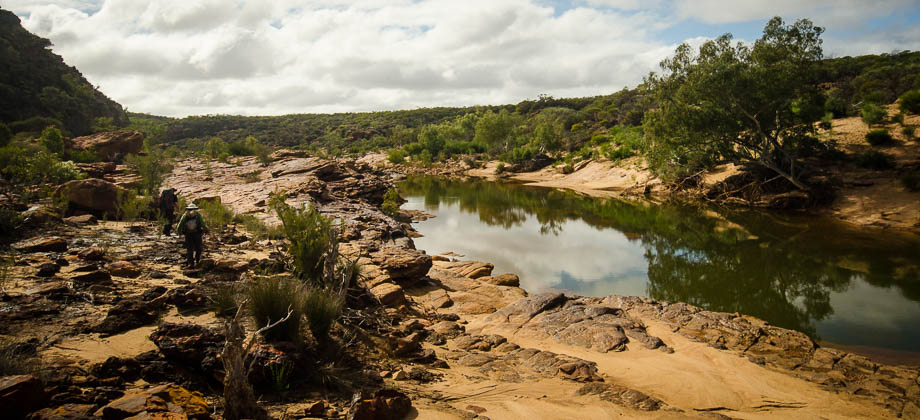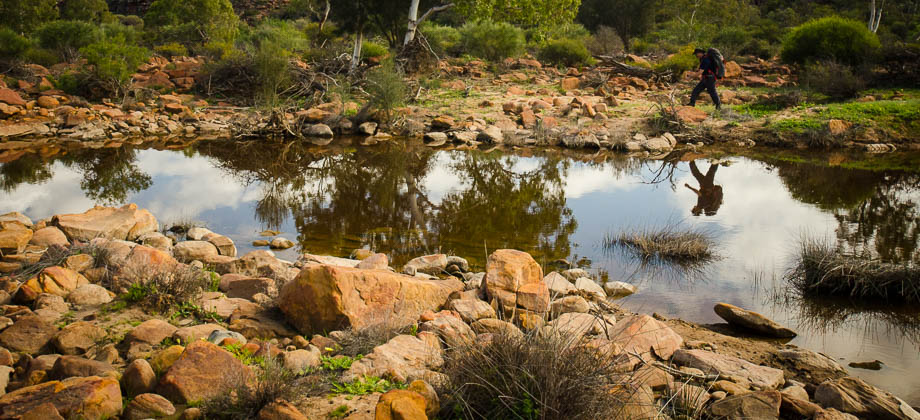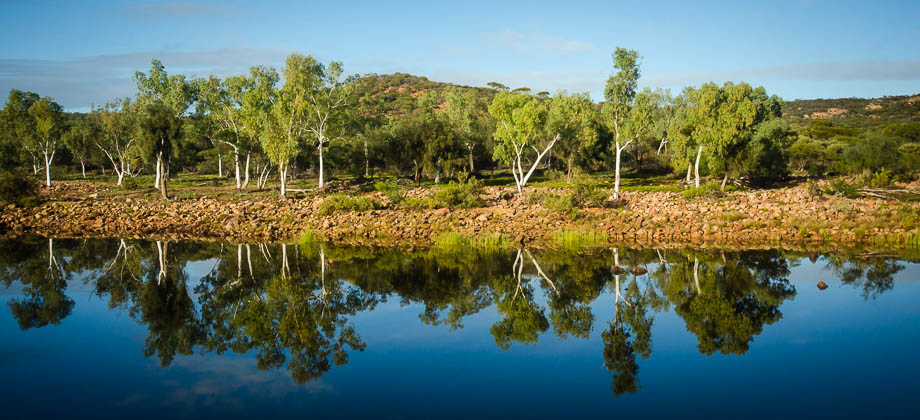Murchison River Gorge - Day 3
River Crossings

We set off at 09:10 that morning and quickly found that we were forced to backtrack a little in order to cross the river, as the riverbank up ahead proved to be impassable. The backtrack was just a short walk along the sandy bank, and with a little rock hopping, we safely found ourselves on the other side.
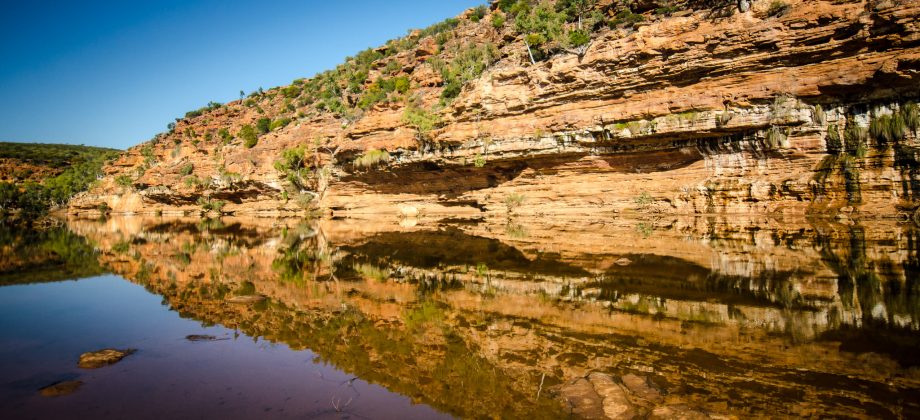
We discovered that a lot of the River Red Gums
(Eucalyptus camaldulensis) on this side of the bank had large dug-up holes, some as deep as half a metre, scattered around them. These holes were caused by the rooting of feral pigs
(Sus scrofa) as they explored their surroundings looking for food. Feral pigs have severely damaged some ecosystems in Australia by extensive rooting such as this, a lot of which causes water erosion and subsequently, the loss of regenerating forest plants. The dug-up earth caused this side of the river to look very barren, which in turn, made the fresh green saplings that lined the upper levels of the cliffs on the other side stand out in sharp contrast.
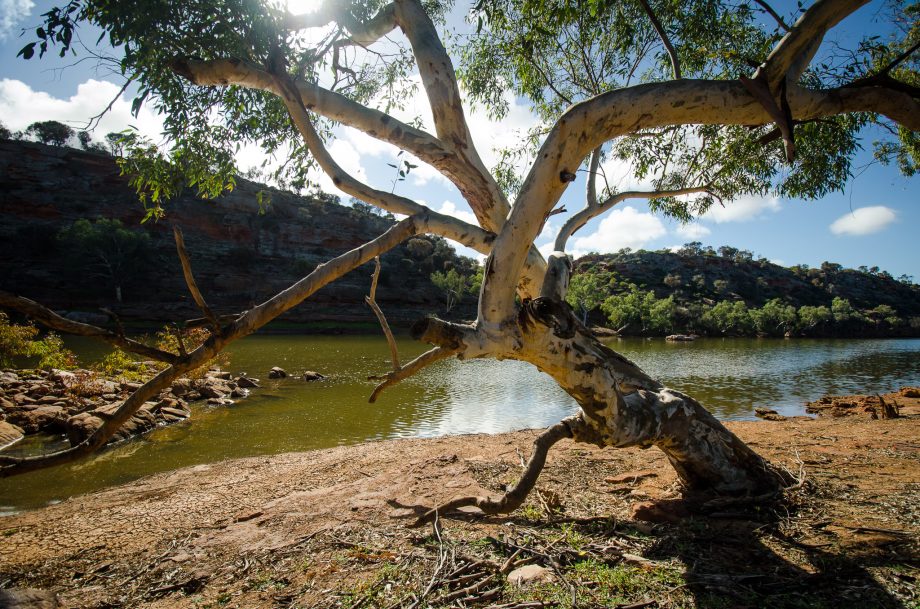
We were forced to make another river crossing before the 4 km mark but this time two of the group members chose to swim across in order to test out their float packs. We were aware beforehand that there was a good chance that we find ourselves with no choice but to swim either across or along the river, dragging our floating packs behind us. With the rain covers attached, the packs seemed to float pretty well without doing much else to them. As a precaution however, most of us double-bagged our belongings to ensure that everything was kept dry. I however, took it one step further - a small thrash bag lined my dry bags and my gear was placed in these. My main pack was then lined with a very large thrash bag before my dry bags were packed into it. A waterproof rain cover was then tied down over the pack to act as the first line of protection.
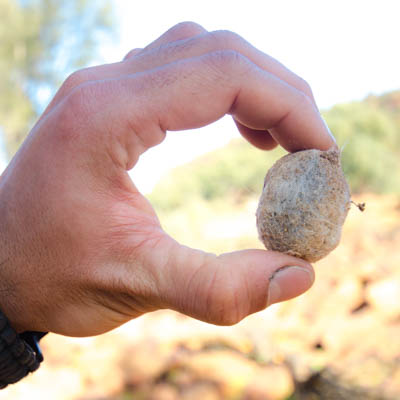
I decided to make a dry crossing however, so made my way back over to a sandbank that stretched across the river instead. As I was walking over, I heard a sound behind me and when I stopped to look over, I saw two huge emus
(Dromaius novaehollandiae) scrambling down the rocks and then sprinting away. These 'Bush Chooks' (a nickname given to them by rural Australian farmers) were indeed huge, with some reporting to reach almost 2 metres in height!
I came upon a small, white owl pellet shortly after that. These tiny pellets are usually regurgitated by the owl
(Order : Strigiformes) after a meal and tend to consist of all the undigested parts of that meal, such as the bones, the feathers, the bills, and the teeth. I was very tempted to open the pellet up and attempt to determine what the last meal had been, but by then the others had crossed the river and were well on their way.
We came upon sweeping fields of boulders at the 5.2 km mark, and after hopping from rock to rock for the next 500 metres or so, we veered left into and up a gully and began to make our way towards the first food drop, leaving the loud and surprisingly regular honks of the endemic pobblebonk
(Limnodynastes dorsalis) far behind.
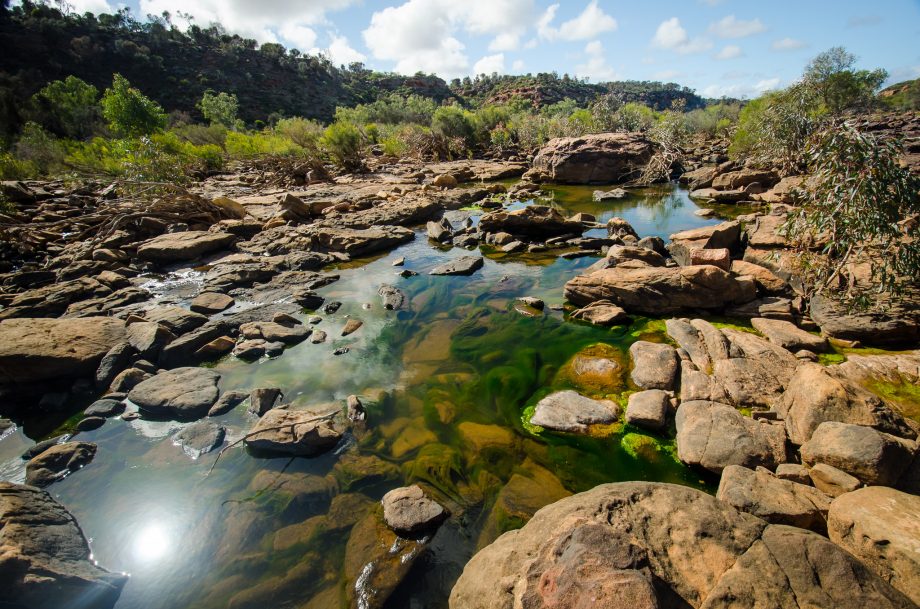
Hawk's Head Viewpoint
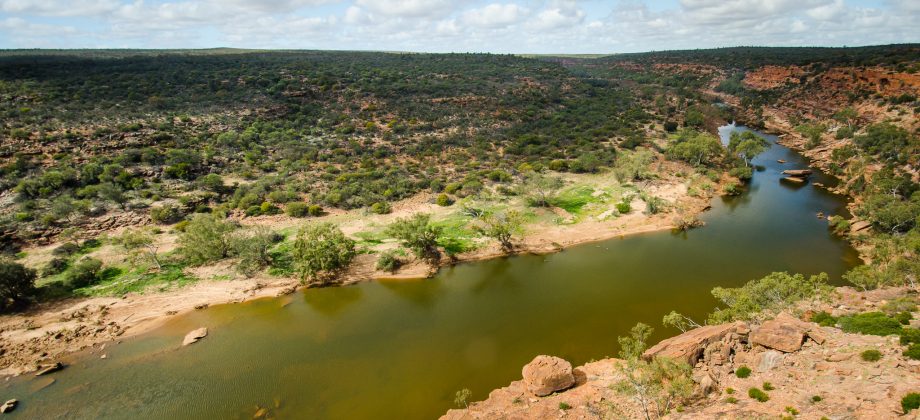 The view from Hawk's Head Viewpoint
The view from Hawk's Head Viewpoint
This was the first section of 'bush-bashing' that we encountered, pushing (or bashing!) our way past and through the prickly Australian shrubbery, trying my best to avoid the grass trees
(Xanthorrhoea drummondii), in the direction of the waypointed food drop. It didn't take too long before we got there and it didn't take too long before we set off again - just after the rest of the guys repacked their packs with food and supplies that would get them through the next couple of days. We cut across to the road (6.6 km mark) and followed it all the way to the Hawk's Head Viewpoint before making our way back into the bush once again.

 We discovered that a lot of the River Red Gums (Eucalyptus camaldulensis) on this side of the bank had large dug-up holes, some as deep as half a metre, scattered around them. These holes were caused by the rooting of feral pigs (Sus scrofa) as they explored their surroundings looking for food. Feral pigs have severely damaged some ecosystems in Australia by extensive rooting such as this, a lot of which causes water erosion and subsequently, the loss of regenerating forest plants. The dug-up earth caused this side of the river to look very barren, which in turn, made the fresh green saplings that lined the upper levels of the cliffs on the other side stand out in sharp contrast.
We discovered that a lot of the River Red Gums (Eucalyptus camaldulensis) on this side of the bank had large dug-up holes, some as deep as half a metre, scattered around them. These holes were caused by the rooting of feral pigs (Sus scrofa) as they explored their surroundings looking for food. Feral pigs have severely damaged some ecosystems in Australia by extensive rooting such as this, a lot of which causes water erosion and subsequently, the loss of regenerating forest plants. The dug-up earth caused this side of the river to look very barren, which in turn, made the fresh green saplings that lined the upper levels of the cliffs on the other side stand out in sharp contrast.
 We were forced to make another river crossing before the 4 km mark but this time two of the group members chose to swim across in order to test out their float packs. We were aware beforehand that there was a good chance that we find ourselves with no choice but to swim either across or along the river, dragging our floating packs behind us. With the rain covers attached, the packs seemed to float pretty well without doing much else to them. As a precaution however, most of us double-bagged our belongings to ensure that everything was kept dry. I however, took it one step further - a small thrash bag lined my dry bags and my gear was placed in these. My main pack was then lined with a very large thrash bag before my dry bags were packed into it. A waterproof rain cover was then tied down over the pack to act as the first line of protection.
We were forced to make another river crossing before the 4 km mark but this time two of the group members chose to swim across in order to test out their float packs. We were aware beforehand that there was a good chance that we find ourselves with no choice but to swim either across or along the river, dragging our floating packs behind us. With the rain covers attached, the packs seemed to float pretty well without doing much else to them. As a precaution however, most of us double-bagged our belongings to ensure that everything was kept dry. I however, took it one step further - a small thrash bag lined my dry bags and my gear was placed in these. My main pack was then lined with a very large thrash bag before my dry bags were packed into it. A waterproof rain cover was then tied down over the pack to act as the first line of protection.
 I decided to make a dry crossing however, so made my way back over to a sandbank that stretched across the river instead. As I was walking over, I heard a sound behind me and when I stopped to look over, I saw two huge emus (Dromaius novaehollandiae) scrambling down the rocks and then sprinting away. These 'Bush Chooks' (a nickname given to them by rural Australian farmers) were indeed huge, with some reporting to reach almost 2 metres in height!
I came upon a small, white owl pellet shortly after that. These tiny pellets are usually regurgitated by the owl (Order : Strigiformes) after a meal and tend to consist of all the undigested parts of that meal, such as the bones, the feathers, the bills, and the teeth. I was very tempted to open the pellet up and attempt to determine what the last meal had been, but by then the others had crossed the river and were well on their way.
We came upon sweeping fields of boulders at the 5.2 km mark, and after hopping from rock to rock for the next 500 metres or so, we veered left into and up a gully and began to make our way towards the first food drop, leaving the loud and surprisingly regular honks of the endemic pobblebonk (Limnodynastes dorsalis) far behind.
I decided to make a dry crossing however, so made my way back over to a sandbank that stretched across the river instead. As I was walking over, I heard a sound behind me and when I stopped to look over, I saw two huge emus (Dromaius novaehollandiae) scrambling down the rocks and then sprinting away. These 'Bush Chooks' (a nickname given to them by rural Australian farmers) were indeed huge, with some reporting to reach almost 2 metres in height!
I came upon a small, white owl pellet shortly after that. These tiny pellets are usually regurgitated by the owl (Order : Strigiformes) after a meal and tend to consist of all the undigested parts of that meal, such as the bones, the feathers, the bills, and the teeth. I was very tempted to open the pellet up and attempt to determine what the last meal had been, but by then the others had crossed the river and were well on their way.
We came upon sweeping fields of boulders at the 5.2 km mark, and after hopping from rock to rock for the next 500 metres or so, we veered left into and up a gully and began to make our way towards the first food drop, leaving the loud and surprisingly regular honks of the endemic pobblebonk (Limnodynastes dorsalis) far behind.



